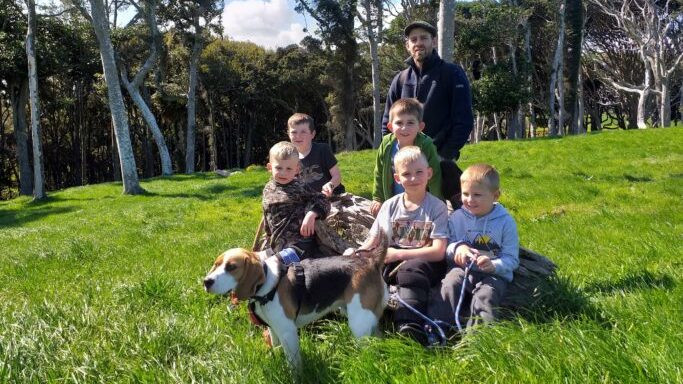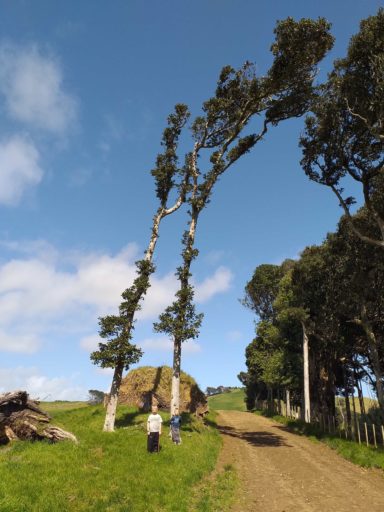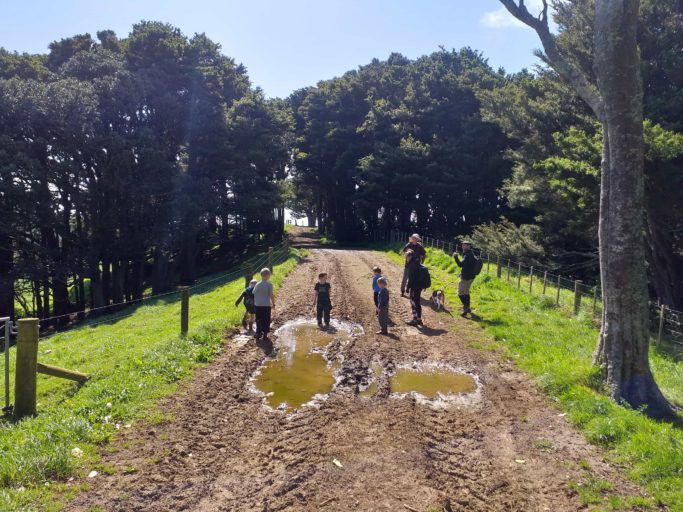When software developer, Andy Saunders, returned from the UK a few years ago, he bought a property in Whiriwhiri, a stone’s throw from where he grew up in North West Waikato.

“When we arrived in 2010 the bird life here was phenomenal! We counted 12 kererū in our pōhutukawa one day (Andy took a photo so that he could count them all), and tūī were everywhere. At the time we didn’t question it, we just enjoyed the company.”
Over the next few years that bird life dropped away. “It really did fade off, it was gradual but noticeable, we had no idea why,” he says.
After speaking to neighbours the reason for the spike became clear. “There had been a TB outbreak in 2007, many of our valleys had been 1080’d,” he says.

“We were here nearly two years before I heard the first possum, but before long I was shooting a possum every second night,” he says. “The rats returned a little faster and they are the reason Predator Free Whiriwhiri kicked off. A rat in the roof spurred a trapping campaign. We removed 55 rats from a two acre bush block in a little over six weeks using two dozen snap traps.”
This was a good start but keeping them out meant getting the neighbours on board. Two years later there are 21 local landowners actively controlling rats and possums.
Andy credits Andrew Sinclair and the Whakaupoko Landcare Group as being a huge support for the Whiriwhiri start-up group.
“Whakaupopo Landcare are our mentors. Andrew Sinclair does a huge amount of work in the local conservation scene.”
Predator Free Whiriwhiri is seeing the results from their own efforts already.
“We have the possum and rat numbers way down; within two years we are seeing the squadrons of tūī come back. It’s not unusual to see eight or more at a time. In fact, bird life across the board has rebounded.”
The ruru numbers have also soared.
“Some neighbours were rightly concerned that baiting might impact the ruru numbers but now it’s their sleep that is being impacted.”
Andy explains that they are now using very little bait as they are just preventing re-invasion with a five times per year action plan.
“The ruru numbers increased while we were in the knock down phase so we only expect them to increase further now we are reducing bait usage. New baits coming on the market are further mitigating secondary kill risks.”
Results are recorded on Trap.nz and results are displayed publicly on the Predator Free Franklin website.
“I’m now a software developer for Trap.nz,” says Andy, “and that came about through setting up Predator Free Whiriwhiri. The Trap.nz system is at the heart of all the collaborative work.” Some of the trap and bait network on Trap.nz, all our landowners have access to this and can keep their records up to date.
The new Trap.nz system has just gone live and Auckland Council has recently joined the Collaborative (funders of the Trap.nz system).
“I now have a personal interest as I recently joined the development team,” Andy says, “And I’m keen to push it as it is a game changer for getting groups and individuals to collaborate. ”
Initial set-up cost for Predator Free Whiriwhiri’s predator control was not expensive and expanding the project has been even less so because much of the equipment needed was already sitting around idle on various farms. Andy’s family lifestyle block, like many in the area, includes areas of virgin native bush block, many designated as SNA status (significant natural area.)

“Most blocks have been left untouched because the valleys are too steep to farm,” he explains. “A lot of the bush blocks are fenced off and under council or QEII covenant.”
Bait stations from the previous TB-free 1080 operation in the wider area remained in place in some of these blocks. Contractors offered to remove them after the operation ended if landowners wished, Andy understands, but most landowners allowed the bait stations to remain.
“There are over 1000 bait stations installed between Port Waikato to the South and Karioitahi to the North. Nearly all have been sitting idle for 10 years, untouched,” says Andy. “So we got the coordinates for where they were located from the original contractors.”
“It seems 1080 was prioritised over bait stations in our steeper valleys so we had to start from scratch with new installations, but the surrounding areas will be easy to expand into given the existing network”.
It does beg the question: in how many other parts of rural New Zealand, are bait station networks lying idle after long-forgotten predator control operations? It’s a big resource just waiting to be utilised again and something that’s worth checking out for those living in rural areas where eradication programmes may have been carried out in the past.
Perhaps other groups of farming neighbours can put old bait stations to good use and get their own landcare group going again.

